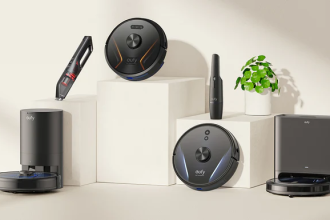In the past several years, we’ve seen edge computing claim its spot as an essential computing technology of the future. Edge computing—a network architecture philosophy that uses highly distributed networks to reduce data processing times—allows organizations to deploy computing power where it’s most needed.
With an incredible amount of processing power now available inside a small electronics enclosure, it’s more practical than ever to deploy edge computing solutions to alleviate data bottlenecks and improve server performance. Between the increasing adoption of IoT devices and ever-increasing data processing requirements in our homes and workplaces, it’s increasingly clear that edge computing will be a must-have for smooth network performance.
No one can say with certainty just what kind of applications and developments we’ll see from edge computing in 2022. But these five trends offer a glimpse into what could transpire in the future of this promising technology.
- The continuing rise of IoT will fuel adoptions of edge computing.
The Internet of Things (IoT) and edge computing are two technologies that seem practically made for each other. The distributed networks that edge computing brings to the table are a perfect fit for IoT, which requires the ability to process localized data sources efficiently.
Organizations with a lot of IoT assets will increasingly find that edge computing offers high potential for network efficiency improvements. Edge computing allows local processing of data from local IoT instances, dramatically reducing latency and creating more self-reliant IoT networks.
For example, a smart security camera with edge computing technologies can process facial recognition data from its footage right on the device itself rather than sending it to a cloud server. And a device that monitors the status of manufacturing equipment can perform many of its complex calculations without the data ever leaving the plastic enclosure that houses it. As these processing capabilities improve, businesses can place increasing levels of confidence in their IoT networks.
- Edge computing will become increasingly important for media companies.
Americans are now streaming an incredible amount of media content through apps like Hulu, Netflix, Disney Plus and Amazon Prime. However, the bandwidth requirements to stream all of that HD video content straight from the cloud are beginning to place a serious strain on existing data networks.
Edge computing can improve media streaming speed and quality by storing and processing popular media content in edge computing instances that are closer to end users. What’s more, it’s not just for Netflix streaming. Edge computing can create faster speeds in online gaming and videoconferencing as well. The more edge processing power consumers have access to, the more seamlessly they’ll be able to engage with the media and the applications that shape their worlds.
- Smart city projects will start implementing edge computing.
“Smart cities” use IoT technology to create improvements in utilities, first responder services, sanitation and more. Everything from a parking meter to a traffic light can collect valuable data and use it to manage and integrate the functions of a city. However, like other IoT applications, smart cities require large amounts of data processing power close to the source of the data.
As global investment in smart cities continues to climb, the associated processing power will need to increase, and edge computing offers an efficient way to provide the required capacity. Smart cities are a perfect use case for edge computing—they’re localized, have large numbers of IoT devices, and possess the resources to build at scale.
Edge computing will give the IoT-enabled smart city the tools to react in real time to changes in conditions. Gunfire detection systems will allow law enforcement to respond more quickly to violent crime, and smart traffic lights will help manage a smooth flow of traffic. Undergirding all of these technologies will be a layer of edge computing that processes data more quickly and more effectively.
- Cutting-edge tech like autonomous vehicles will continue to make progress.
The autonomous vehicle industry has had a slower start than many analysts predicted. However, interest in the technology remains high, and edge computing is a critical technology for the further evolution of the autonomous vehicle.
An autonomous vehicle needs the ability to rapidly process a huge volume of locally collected data within milliseconds. Relaying that data to a central cloud server is simply too time-consuming and too dependent on the bandwidth conditions of local wireless networks. Thus, autonomous vehicles need substantial onboard edge computing capabilities to ensure they can operate safely.
As autonomous driving technology navigates the road to market, it will continue to rely on the steady evolution of edge computing technologies to make it safe and effective. And as the technology expands into logistics vehicles such as semi trucks, it will be even more important to provide sufficient onboard computing power for safe operation.
- Cloud services companies will continue to ramp up hybrid edge-cloud offerings.
Edge-cloud hybrids are no longer seen as transitional technologies on the road to full cloud adoption. Instead, many businesses are considering how they can capture the best of both worlds.
In a very large business where hundreds or thousands of employees and customers may be simultaneously accessing cloud services, it can be challenging to maintain data speeds using a cloud-only model. By deploying edge computing assets, businesses can unhitch large swathes of their data processing from the requirements of cloud computing.
There are also security advantages to a hybrid edge-cloud design. A system that relies fully on the cloud can be vulnerable to “man in the middle” attacks in which cybercriminals intercept data during transmission. A hybrid edge-cloud system does more onsite computing, and thus reduces the need for data transmission in the first place.
In 2022, it’s clearer than ever that localized edge computing will be a major player in all kinds of key 21st century technology. Whatever the future brings, it will reward businesses that live at the edge of what’s possible.














